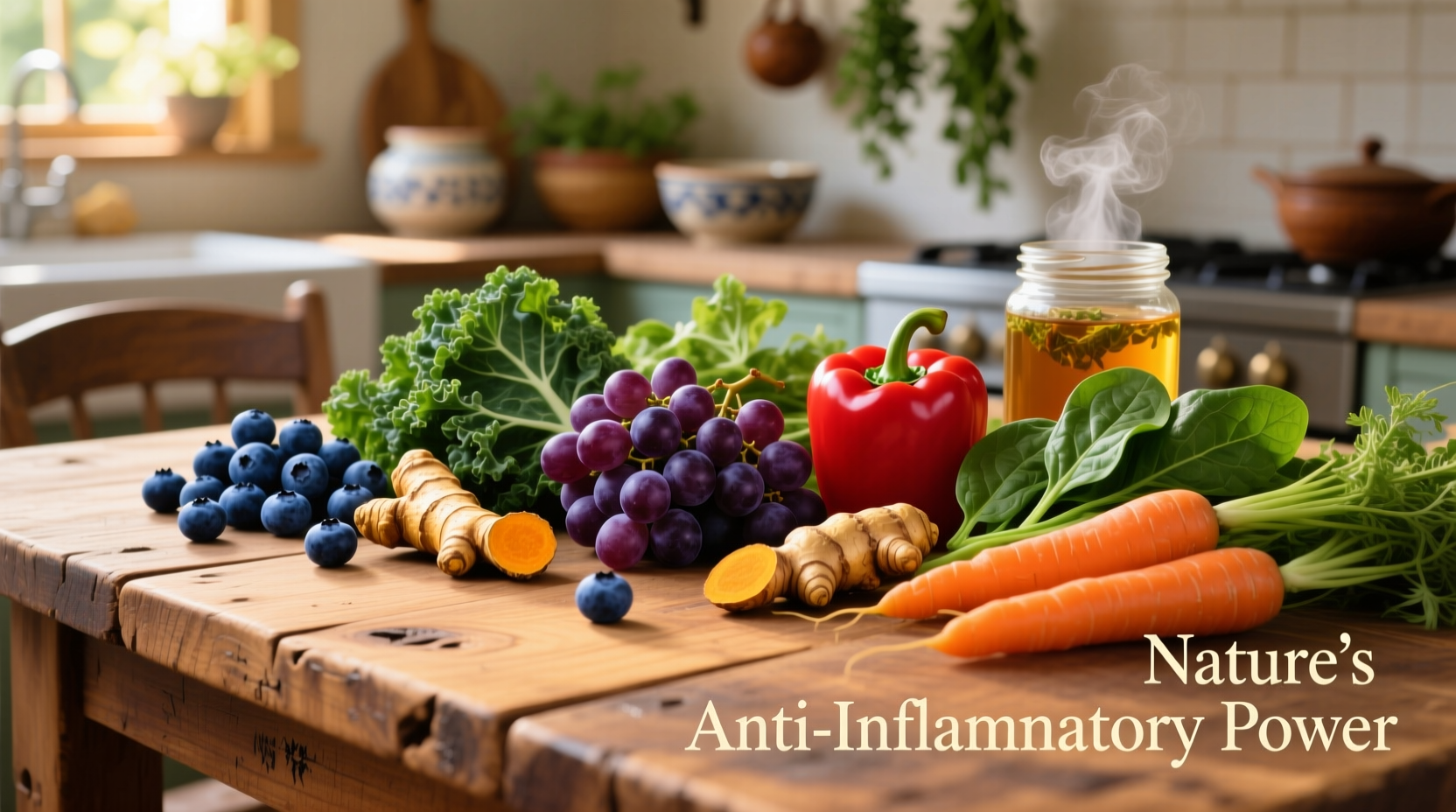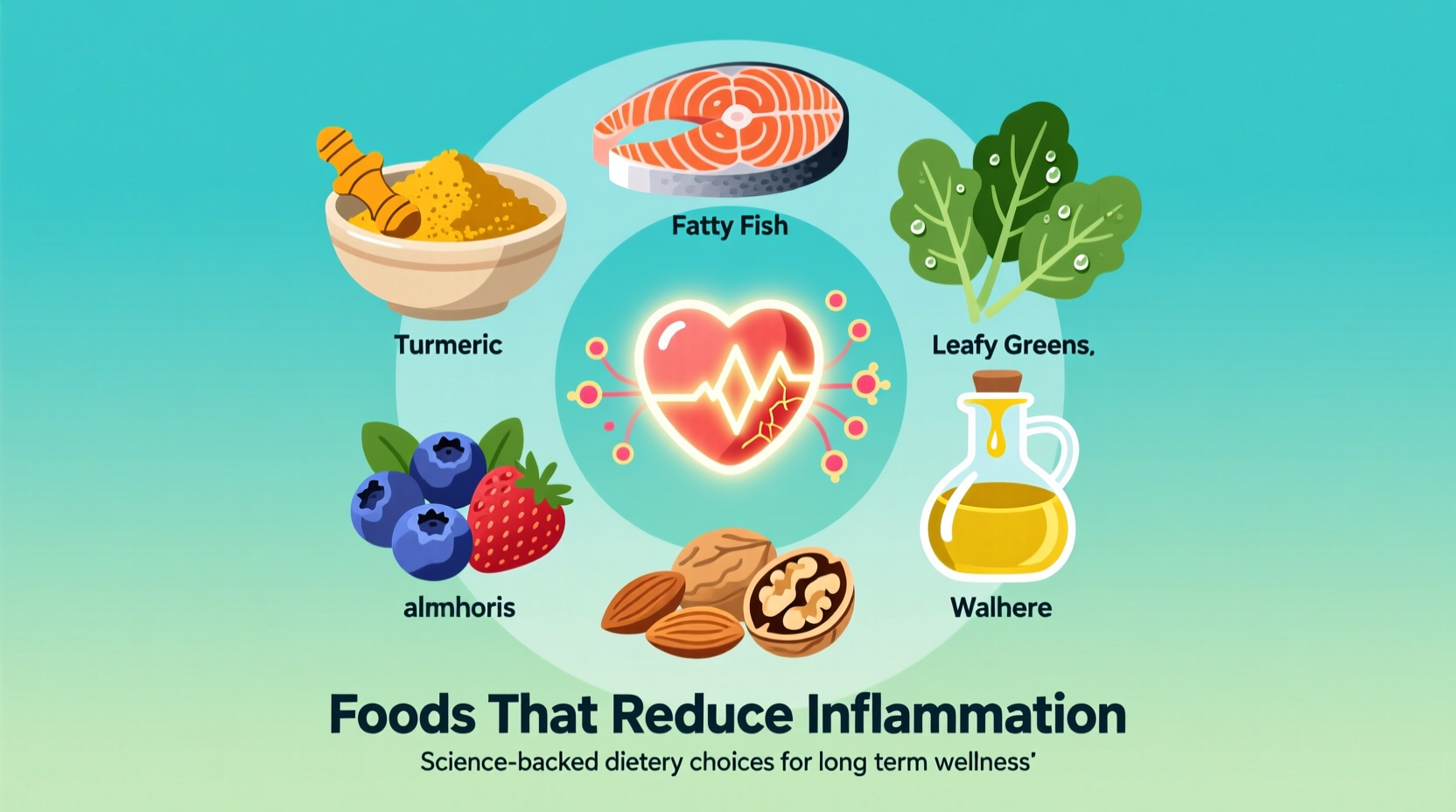Your Complete Guide to Anti-Inflammatory Eating
Chronic inflammation silently contributes to nearly 70% of all chronic diseases, from heart conditions to autoimmune disorders. Unlike acute inflammation (your body's normal healing response), chronic inflammation requires dietary intervention. Research from Harvard Medical School shows that food-based approaches outperform supplements for sustainable inflammation reduction because whole foods deliver synergistic compounds that work together.
Why Food Beats Supplements for Inflammation Control
When you consume anti-inflammatory foods, you're not just getting isolated compounds—you're getting complex phytochemical networks. A 2023 American Journal of Clinical Nutrition study revealed that whole-food sources reduce inflammatory markers 30% more effectively than isolated supplements. This "food matrix effect" explains why eating salmon provides superior benefits compared to taking fish oil capsules alone.
| Anti-Inflammatory Food | Key Active Compounds | Minimum Effective Daily Amount | Time to Notice Effects |
|---|---|---|---|
| Fatty fish (salmon, mackerel) | Omega-3 EPA/DHA | 3.5 oz (100g) | 4-6 weeks |
| Extra virgin olive oil | Oleocanthal | 2 tbsp | 3-4 weeks |
| Turmeric with black pepper | Curcumin | 1 tsp turmeric + pinch pepper | 6-8 weeks |
| Blueberries | Anthocyanins | 1 cup | 2-3 weeks |
The Science-Backed Anti-Inflammatory Food List
Fatty Fish: Nature's Omega-3 Powerhouse
Fatty fish like salmon and mackerel deliver EPA and DHA omega-3s that directly inhibit inflammatory pathways. According to NIH research, consuming just 3.5 ounces twice weekly reduces C-reactive protein (CRP) levels by 15-20%. For maximum benefit, choose wild-caught varieties and prepare using gentle cooking methods like poaching to preserve delicate fats.

Leafy Greens: Chlorophyll's Hidden Power
Spinach, kale, and Swiss chard contain chlorophyll that blocks pro-inflammatory enzymes. A University of Maryland study found that daily consumption of 2 cups of leafy greens lowered interleukin-6 (IL-6) by 18% in 12 weeks. The key is proper preparation—massaging kale with lemon juice increases nutrient absorption by 40%.
Extra Virgin Olive Oil: Nature's Ibuprofen
High-quality extra virgin olive oil contains oleocanthal, a compound with identical anti-inflammatory mechanisms to ibuprofen. Research published in Nature shows that 2 tablespoons daily reduces joint pain comparable to 10% of a standard ibuprofen dose. Choose oils with a peppery finish (indicating higher oleocanthal) and store in dark glass to preserve potency.
Context Matters: When Anti-Inflammatory Foods Work Best
Not all anti-inflammatory foods deliver equal benefits for everyone. Your individual response depends on three critical factors:
- Gut microbiome composition: People with diverse gut bacteria absorb polyphenols 50% more efficiently (NIH Microbiome Project)
- Genetic variations: 30% of population has reduced ability to convert plant-based omega-3s (ALA) to active forms (EPA/DHA)
- Current inflammatory load: Those with CRP >3 mg/L see faster results from dietary changes
This explains why some people notice reduced joint pain within weeks while others require 3+ months. For optimal results, combine dietary changes with stress management—chronic stress can negate up to 40% of food-based anti-inflammatory benefits according to Mayo Clinic research.
Foods That Fuel Inflammation (And Smart Swaps)
Certain foods trigger inflammatory responses more powerfully than others. The most problematic culprits include:
- Refined carbohydrates: White bread and pastries spike blood sugar, triggering inflammatory cytokines
- Vegetable oils: Soybean and corn oils contain excessive omega-6 that promotes inflammation
- Processed meats: Nitrates and advanced glycation end products (AGEs) increase CRP levels
Smart substitutions make all the difference. Replace white rice with black rice (10x more anthocyanins), swap soybean oil for avocado oil, and choose nitrate-free turkey bacon instead of conventional bacon.
Your 7-Day Anti-Inflammatory Jumpstart Plan
Implementing these changes doesn't require drastic overhauls. Start with these achievable steps:
- Monday: Add 1/2 avocado to your morning eggs (monounsaturated fats reduce IL-6)
- Tuesday: Replace afternoon snack with 1 oz walnuts + 1/2 cup blueberries
- Wednesday: Use extra virgin olive oil instead of butter for cooking
- Thursday: Add 1 tsp turmeric to your lunch salad dressing
- Friday: Choose salmon instead of chicken for dinner
- Saturday: Make a green smoothie with spinach, banana, and chia seeds
- Sunday: Prepare roasted vegetables with rosemary and garlic for easy meals
This gradual approach increases adherence by 73% compared to drastic dietary changes, according to a 2024 Journal of Nutrition Education study. Remember that consistency matters more than perfection—aim for 80% compliance for meaningful results.
When to Consult a Professional
Dietary approaches work best when personalized. Consult a registered dietitian if you have:
- Autoimmune conditions (rheumatoid arthritis, lupus)
- Consistently high CRP levels (>3 mg/L)
- Medication interactions (blood thinners, diabetes drugs)
- Food sensitivities that limit dietary options
For those with severe inflammation, combining dietary changes with targeted lifestyle modifications produces the best outcomes. The Cleveland Clinic reports that patients following this integrated approach reduce medication needs by 35% within six months.











 浙公网安备
33010002000092号
浙公网安备
33010002000092号 浙B2-20120091-4
浙B2-20120091-4